In the recent past, the Bay of Bengal has witnessed frequent cyclones. In 2011, when Cyclone Thane struck the coasts of Cuddalore in Tamil Nadu, many farmers looked for a crop that could withstand climatic fluctuations. Sharada Balasubramanian says vetiver (Chrysopogon zizanioides)—a hardy grass—was found to be a suitable alternative to cashew and casuarina, which were often getting toppled by cyclone. Farmers found this not just climate-resilient, but also profitable from an income perspective.
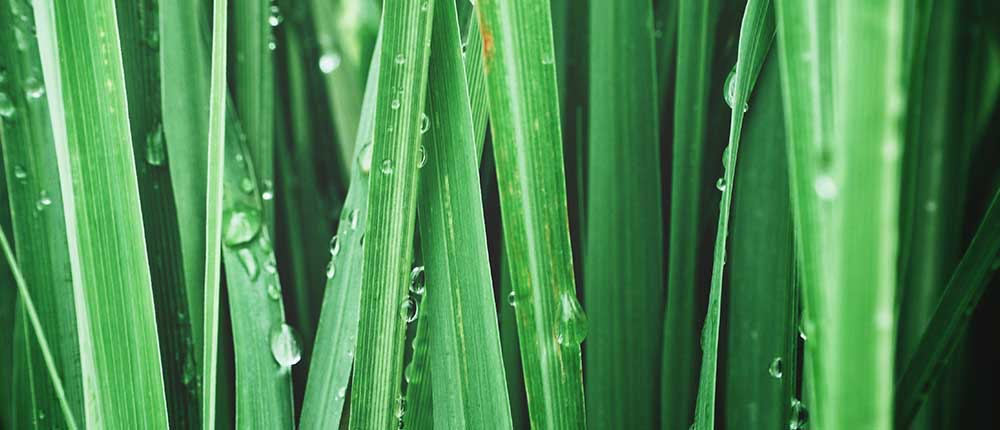
Chandra Sekharan, a 57-year-old farmer's crop land is barely 50 metres away from the sea. From here, one can see the deep blue waters of the Bay of Bengal. At his farm, harvest of vetiver (Chrysopogon zizanioides), a perennial grass, is happening. A huge vehicle is busy uprooting this hardy grass for harvest. As vetiver is harvested, women in the farm collected them, carried it on their heads. They walk to a place where vetiver was towered up like a little hill. The women keep passing these roots and stacking them up.
In Cuddalore, tsunami devastated these lands first in 2004. The cyclone numbers have risen, threatening the livelihood of farmers here. Farmers generally grew cashew and casuarina here. In 2011, when Cyclone Thane struck, crops were lost, and farmers started to look at alternative crops. Chandra Sekharan says, 'In 2011, when Cyclone Thane struck, casuarina trees broke, and were wiped out, and we could not do any sales. There was loss in lakhs. The government also did not give any compensation. When we tried to look at alternative crops, people told me to plant vetiver. And I started doing it.'
Cyclones have been increasing after tsunami, according to Chandrasekhar. He says, 'Earlier there were lesser cyclones. It happened maybe once in a year or twice. It takes 4–5 years for casuarina to grow. For 3–4 years, it grows and then one year, there is heavy loss. Also cashew season is only for 3–4 months. If there is rain, there will not be any yield. In comparison, vetiver is a yearly yield. We shifted because it was profitable.'
Involvement of Youth
D Enbarasan, a 25-year-old member of the India Vetiver Network, spearheaded the formation of youth groups for vetiver farming in Cuddalore. He came to know about vetiver through his mentor C K Ashok Kumar from the Cavin Care group of companies. During his travel in the district, he was surprised that there were a handful of traditional farmers, who were still into vetiver cultivation, especially in one village Nochikkadu.
Enbarasan says, 'When we were searching for vetiver farmers, we came to know that 15–20 acres of farming is done in Cuddalore. When we approached those farmers, they said that the produce was sold in local herbal markets, and pharma companies from many years.' The youth group looked at expanding the acreage of land under vetiver in Cuddalore. They also found out from their mentor, C K Ashok Kumar that vetiver oil had a huge demand in foreign countries. The oil is used as base for perfumes in France. Today, companies come to Cuddalore to procure these roots. Enbarasan says, 'We increased the farming area by 300 acres. Our vision was to look at unutilized lands in the coastal belt and how can that be used as there were abundant empty lands.'
Though many farmers shifted to vetiver cultivation in 2011, in 2016, when the Indian Prime Minister announced the Aroma mission, and declared Cuddalore as a hub for vetiver in India, more farmers jumped into this. Many educated youth also started cultivating vetiver here.
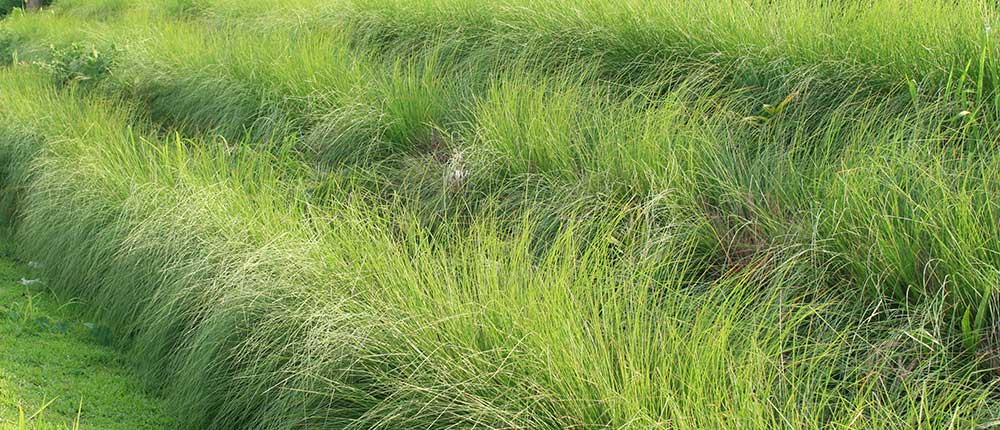
Environment-friendly Grass
During their research, Enbarasan found out that, this grass was beneficial to the environment. 'As there are industries here, there is pollution. Also, because it is a coastal area, there is sea erosion. This is the only plant which will survive in any climate, any situation. We found that this one plant purifies air, water, gives fertility to land', says Enbarasan. In many other countries, such as Haiti, Philippines, Vietnam, and Thailand, this plant is more used for environmental reasons. Enbarasan explains, 'When we talk about the most eco-friendly plant, we talk about bamboo. In a year, 400 kg of carbon is sequestered from bamboo. In vetiver, 2.5 kg of carbon is sequestered.' He adds, 'When we practise vetiver farming, we plant 40,000 saplings. Yearly, 80,000 tonnes of carbon is sequestered from one acre. The plant is also used for phytoremediation, slope strengthening, and river bund strengthening.'
Long ago, Raja Raja Cholan, the Tamil King had planted these roots on river bunds to strengthen them. Some of those wild vetiver plants can still be found in this region. 'When a tsunami comes, the difference between this and other crops is that this can sustain while other crops won't,' says Chandra Sekharan. This plant can withstand salt water intrusion, and is also drought-tolerant.
Sadanandam, a farmer says, 'Though the crop is flood tolerant, if excessive rain pours, it will lead to decomposition of vetiver roots. When that happens, new roots emerge, and this has to grow again. And as a result, the harvest time is extended.'
However, Enbarasan says, 'Cyclone doesn't and hasn't affected vetiver. It can survive, as this is a perennial grass variety, it can handle any climate change. The plant can naturally adapt and sustain, and we are benefitted by that.' Not just that, it absorbs toxins in the soil and converts these into biomass. It removes heavy metals from soil.
Enbarasan says, 'It can be used in tannery effluent treatment for purification. High systems are used for purification in such places. If we plant vetiver using red soil, total dissolved solids (TDS) percentage reduces. There is scientific evidence to this fact as well.' That's not all. In India, where municipal solid waste is a huge problem, vetiver could be used. Waste accumulation in the landfills is an issue. We use many acres for landfilling. Enbarasan says, 'One person generates 300 grams of waste per day, and if we calculate that with the population, it will be large. Just in Cuddalore, landfilling happens over 20 acres of land. When we fill plastic waste, and it rains, leach will be generated. It will spoil the groundwater. When we did trials, we observed that vetiver grows in the leached land. It sustained and converted into biomass. From an environmental aspect, this is helpful.'
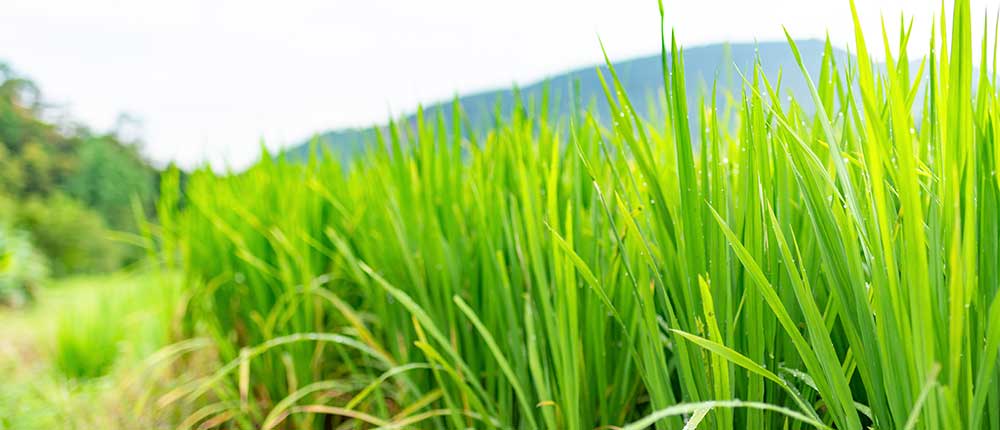
When Cyclone is a Boon
Farmers had their own challenges when it comes to the cost of cropping and harvesting vetiver. First, vetiver is one of the most expensive crops when it comes to harvesting. Labourers have to be hired to separate the roots from the plants, to collect them in a place. A vehicle needs to be hired for uprooting the harvest. Other than these costs, there are other challenges too. These include the fuel costs of producing a crop, living next to the sea. Enbarasan says, 'Fuel costs are high for vetiver cultivation. For an acre, for a year, 1.5 lakh are the expenses. In that sense, the most expensive crop is vetiver. In harvesting itself, we are spending over 80,000 for labour. That is why expenses are high.'
The farmers in this region face another issue. Electric lines cannot pass through this area as it is a coastal belt, and during cyclones, it could be life-threatening. So, unlike other farmers, these farmers do not have even access to free electricity. Also, they cannot dig bore wells due to proximity to the sea and groundwater salinity. Enbarasan says, 'Since this is a coastal belt, there is no free service. There is no possibility for an electric line. Wind issues will be there and if the electric lines fall, it will impact everyone. There are some norms. So, we use diesel engines for irrigation.'
Around October 20 every year, annual rainfall starts in Cuddalore. Enbarasan says, 'We start planting in August or September. We irrigate for 40 days until the plants mature. After that, there is no issue even if the plant stays up in water. We also need not water the plant in October, November, December, and January. The impact of water will be there for four months. We need not give water. In February, for a month we leave it. In March or April, we harvest. We use this cycle widely for vetiver cultivation.'
Surprisingly, sometimes, cyclones and the rainfall they bring along, is also a boon in disguise. Enbarasan says, 'If cyclones arrive, we are actually benefitted more as we spend 40,000 to water the plants with diesel engines. If there are cyclones, we save 30,000.' The diesel-powered motors add to the expenses of this crop.
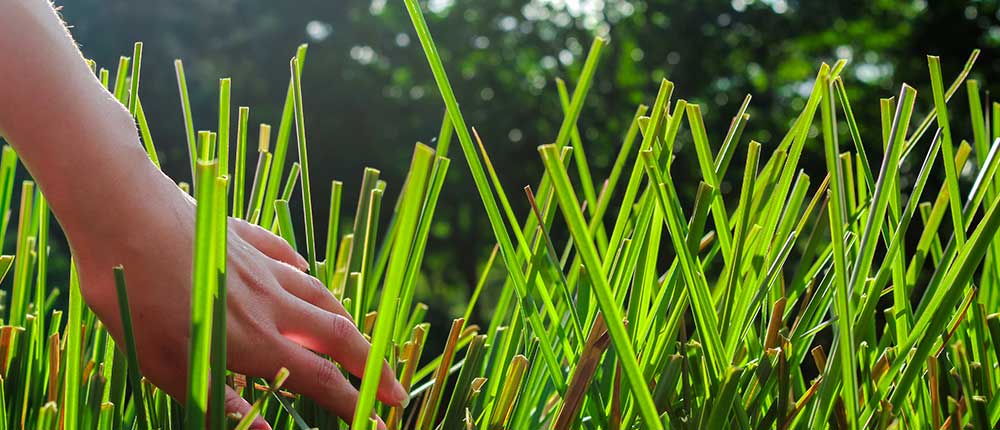
Solar Panels for Watering
Since farmers have to spend a lot on diesel, if the solar pumps are subsidized, their expenditure on fuel costs will reduce. Also, installation of sprinklers will reduce the pressure on labourers. Sadanandam says, 'If we are given solar pumps, diesel consumption will reduce. If we install sprinklers, it will reduce the labour cost too. Then, we can take higher yield. We are spending a high amount on diesel. One day, for 1.5 acres, we spent 500. You can calculate that for 20 acres. For diesel, we spend 500, plus for one labourer we spend another 500. That is 1000 a day for 1.5 acres of land. And, we have to do this continuously except the rainy season.'
Gowtham, a 21-year-old youth from the Indian Vetiver Network invested in a solar pump. He says, 'Diesel is more expensive. In the first one year, the expenses are high for solar pump, we can recover the money in the first year itself. It is definitely beneficial.' However, for farmers like Sadanandam, who don't own lands and are managing the vetiver land, getting loan in the bank is very difficult. So, they cannot buy these solar panels. The loans are given to those who own the land. 'A 5 HP-solar pump costs 5 lakh,' says Chandra Sekharan. Diesel prices have been eating into the profits of these farmers.
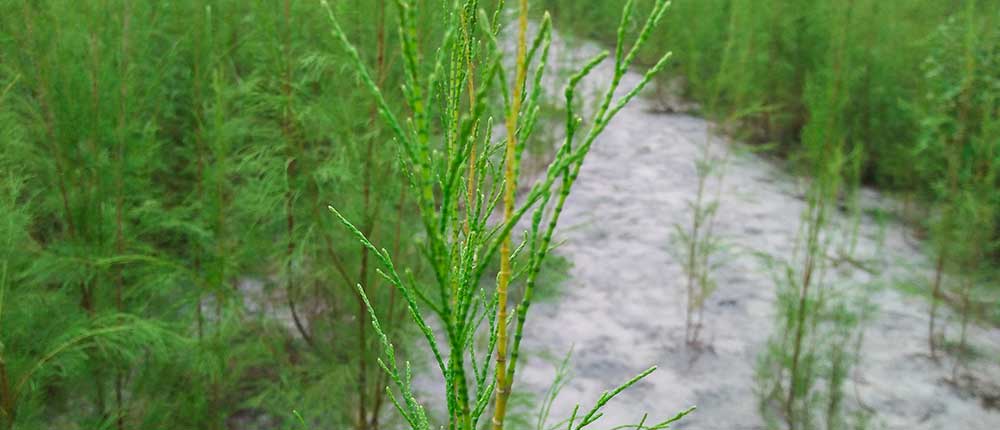
More Harvest, Less Profit
With the popularization of vetiver, from both, a business and climate perspective, the harvest overall increased. As a result, prices reduced last year, and the quantity they procured from farmers also reduced. Chandra Sekharan says, 'The oil producing companies give money, but they are reducing the tonnage. From 500, it is reduced to 300 tonnes. This extra tonnage, people sell it in the local market. In the local market, there is a lot of delay in payment—it sometimes takes 4–5 months. Farmers would have taken a loan, so their livelihood becomes a question.'
He adds, 'Until last year, it was fine. From last year, the prices have dropped. Because of that, labour cost has increased. Diesel prices have gone up. But, for a tonne of vetiver we were getting 140,000. Today, we are getting only 100,000. In an acre, even if I get 2 tonnes, it is 80,000 less now, for one person, per acre. The profit is also minus 80,000 now. It is just a very neck to neck situation. For people who have higher productivity it is profitable, but not for others.'
Though these price fluctuations are a part of cyclical changes in agriculture, there are some steps that can help farmers cushion these shocks. Sadanandam says, 'The solution for this is that the government or us—we should set up a fixed price of 130. Then we get profit. For an acre, we would get 50,000, if we sell at 130.'
Even the government would benefit by supporting the farmers. Sadanandam says, 'If the government procures from us and exports the roots, it will be profitable for them.' The locals also talk about marketing support from the government, which can give further impetus to the farmers. Enbarasan says, 'It will be great if the government can support in marketing initiative. To start off promotion and development, free saplings and free units were given. But it ended there. There is a gap between marketing and procurement. Because of this gap, we farmers are suffering.'
Sometimes, farmers themselves have a direct deal with the companies and sell it at a lower price. And this leads to loss for other farmers who would be unable to sell their produce. Since there are middlemen involved in this business, there is significant price control in vetiver. If the government offers subsidies for solar panels, sets up a minimum price for the harvest, and also takes up procurement, farmers say it would be beneficial in the long run. Also, if the export market is boosted up, with government efforts, farmers could take efforts to produce more.
For these coastal farmers to produce this climate-resilient crop in the long run, there is also a need for the research communities to talk about the benefits of vetiver, its importance to land, water, air, and carbon emissions. Such research information, if it is shared, will lead to more use of vetiver for environmental reasons as well. Just the way it is happening in other South-East Asian nations. Enbarasan signs off, 'If there is a right bridge for this if there is a study and analysis done on the market trends, and if there is a control system, it would be supportive for us.'
(Sharada Balasubramanian is the recipient of the Asian Environmental Journalism Award 2019, Environmental Journalist of the Year, Environmental Story of the Year, and the Prem Bhatia Award for Excellence in Environmental Reporting 2019, amongst several other prominent environmental journalism awards.)
This article was first published in TerraGreen Magazine January edition.
